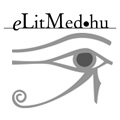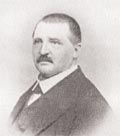The eLitMed.hu medical portal uses computer cookies for convenient operation. Detailed information can be found in the Cookie-policy.
Lege Artis Medicinae - 2001;11(04)
Content
[Percutaneous coronary intervention in ischaemic heart disease]
[In ischaemic heart disease, if the medically treated patient’s anginal complaints and/or ischaemic symptoms are persistent, coronary angiography, and according to its results, coronary intervention (surgery or dilatation) may become necessary. The intervention is required in critical stenosis (>70% diameter) of the main vessels, the emergency depends on the clinical situation. Basic method of coronary angioplasty is the balloon dilatation, other tools (stent, rotablator, laser wire, atherectomy device, etc.) are also available. Periprocedural anticoagulant (heparin) and platelet aggregation inhibitor (aspirin, ticlopidine, GP IIb/III/a receptor blocker) treatment is required, the latter after the procedure as well. After stent implantation the lumen of the vessel is bigger and the incidence of major adverse cardiac events (acute myocardial infarction, repeated intervention, fatal outcome) is diminished. Decrease of serum lipid level improves the outcome of coronary angioplasty. It is applicable successfully for multiple lesions, occluded vessels, stable and unstable angina, in the early phase of myocardial infarction, in patients who underwent coronary surgery, and in old age too. Risk factors of the intervention are: tortuous vessel, significant calcification, stenosis in angle or ostium, luminal thrombus, urgent intervention, old age, female gender, congestive heart failure, unstable condition and acute myocardial infarction. When indicating the intervention, besides the probable results, it is necessary to consider the possibility of complications (myocardial infarction, malignant rhythm disorders, acute heart failure, bleeding, etc.). In left main stem stenosis, 3 vessel disease and in the case of 1 functioning coronary artery surgery would be preferable. With the present facilities the ratio of urgent surgical intervention as well as the mortality is below 1%.]
[Reducing lung cancer mortality through prevention]
[Effective therapy for lung cancer is yet unknown and the role of prevention has continuously increased. In practice, primary prevention of lung cancer means the reduction of smoking either by cessation or by patient education. Screening for lung cancer, considered as a secondary prevention measure, has long been debated. The previously negative attitude for screening has slowly changed in the past years. New studies have been organised recently to make screening more effective. In high risk groups, helical CT-scans with low dose X-ray exposure are preferred and the effectivity of sputum citology completed with immunocytochemical tests is under investigation. Determining the risk group, we focus on age, smoking history, airway obstruction and certain tumour markers. With the help of traditional chest X-rays approximately one third of new cases of lung cancer are discovered in Hungary. Our reasonable target is to identify 60-70% of the new NSCLC cases by risk group screening (age>40 years, smoking>20 P.Y., decrease of FEV1>15%, family lung cancer history and previous asbestos exposure) and by organising population screening more effectively.]
[Introduction of hepatitis G and TT virus diagnostics in Hungary]
[INTRODUCTION - The majority of the viral hepatitis is caused by five hepatitis viruses (A, B, C, D, E). In 1995, three new flaviviruses were discovered, the GBV-A, GBV-B and GBV-C (also known as HGV) viruses. The TT virus was discovered in 1997. Based on literature data, it is now supposed that a part of the unknown hepatitis cases is caused by the recently discovered hepatitis G or TT virus. The aim of this study was to determine the occurrence of hepatitis G and TT viruses in Hungary. PATIENTS AND METHODS - To reveal the RNA of the HGV viruses in the sera of patients suffering from hepatitis of unknown origin, RT-PCR was applied using the primers published in the literature. Seminested PCR was used to detect the DNA of TTV. The nucleotide sequences of nested PCR products were determined. Anti-HGV antibodies were detected by ELISA. RESULTS - The sera of 408 healthy persons older than 60 years were tested for the presence of hepatitis G virus antibodies: 113 tested positive. HGV virus antibodies were found in the sera of patients suffering from hepatitis of unknown origin or aplastic anaemia. 51 sera were tested and 20 were found to be positive for GBV-C antibodies, 4 for HGV RNA. Altogether, 213 sera of patients suffering from hepatitis of unknown origin or from aplastic anaemia were tested for HGV RNA and 26 were found to be positive. Eight PCR products were sequenced, and these sequences were found to be different from each other. 154 sera of patients with hepatitis of unknown origin were tested for the presence of TTV-DNA and 72 of them were positive. Seven PCR products were directly sequenced. Genotype 2 was found to be the most frequent one in Hungary.CONCLUSION - Our results show that both HGV and TTV are present in Hungary and none of them can be considered rare. Further studies are needed to reveal the association between the genotypes of these viruses and hepatitis of unknown origin.]
[Type 2 diabetes in children and adolescents: early complications]
[INTRODUCTION - The prevalence of type 2 diabetes mellitus in children and adolescents is increasing worldwide. PATIENTS AND METHODS - Authors have investigated the prevalence of type 2 diabetes mellitus and of impaired glucose tolerance among the patients of the 1st Department of Pediatrics at the Semmelweis University between January 1989 and September 1998. RESULTS - During this period, 161 children with impaired glucose tolerance and 34 patients with type 2 diabetes mellitus were diagnosed. There was a female predominance. 53% of the patients were already in puberty. The majority of the patients were obese. Serum triglyceride and cholesterine levels exceeded normal values as compared to age matched healthy children. Ambulatory blood pressure monitoring revealed relative nocturnal hypertension. 35% of the patients also had microalbuminuria. CONCLUSION - In type 2 diabetes mellitus the early signs of late complications can be detected in the young. It reveals the importance of establishing the diagnosis of this disease as soon as possible.]
[New oral antidiabetic agents - New aspects in the management of type 2 diabetes mellitus]
[During the past years several new oral antidiabetic agents have become available and more new drugs of this type are expected to appear on the market. New products appeared in both groups of insulin sensitizers and insulin secretagogues. Modern insulin secretagogues are characterized by immediate and short action. As a consequence, insulin secretion will approach the physiological secretory pattern. The rapid, short-term insulin output prevents the abnormal increase of postprandial glucose level and - at the same time - the danger of late hypoglycemia will decrease. The combination of insulin sensitizers with the new insulin secretagogues provides the possibility to apply the basisbolus therapeutical principle to type 2 diabetic patients treated with oral agents.]
[Behavioral science approach to the nursing profession]
[Study of psychosocial work environment in health care and in other non-profit organizations has not gotten priority so far. Workers in the units that are organized by inefficient management skills are more susceptible to the harmful psychological, health and social consequences of everyday work. The main goal of present analysis was to investigate nurses’ work conditions and their psychosomatic health as a part of the ongoing Nurse Study in Csongrád county. 420 nurses participated in the study among whom 218 were registered and 202 student nurses. Selfadministered questionnaire was used as a method of data collection which contained various items on sociodemographics, psychosomatic symptoms, other psychosocial health variables, job-related stress and emotional load, and social support from peers. Based on the results of the multiple regression analyses it can be concluded that nurses’ psychosomatic health was mainly influenced by the characteristics of their psychosocial work environment. The management should pay attention to establish team structures which could help in coping with job-related stress and providing social support.]
1.
Clinical Neuroscience
Is there any difference in mortality rates of atrial fibrillation detected before or after ischemic stroke?2.
Clinical Neuroscience
Factors influencing the level of stigma in Parkinson’s disease in western Turkey3.
Clinical Neuroscience
Neuropathic pain and mood disorders in earthquake survivors with peripheral nerve injuries4.
Journal of Nursing Theory and Practice
[Correlations of Sarcopenia, Frailty, Falls and Social Isolation – A Literature Review in the Light of Swedish Statistics]5.
Clinical Neuroscience
[Comparison of pain intensity measurements among patients with low-back pain]1.
Clinical Neuroscience Proceedings
[A Magyar Stroke Társaság XVIII. Kongresszusa és a Magyar Neuroszonológiai Társaság XV. Konferenciája. Absztraktfüzet]2.
3.
Journal of Nursing Theory and Practice
[A selection of the entries submitted to the literary contest "Honorable mission: the joys and challenges of our profession" ]4.
Journal of Nursing Theory and Practice
[End of Life and Palliative Care of Newborns in the Nursing Context]5.
Journal of Nursing Theory and Practice
[Aspects of Occupational Health Nursing for Incurable Patients ]




















